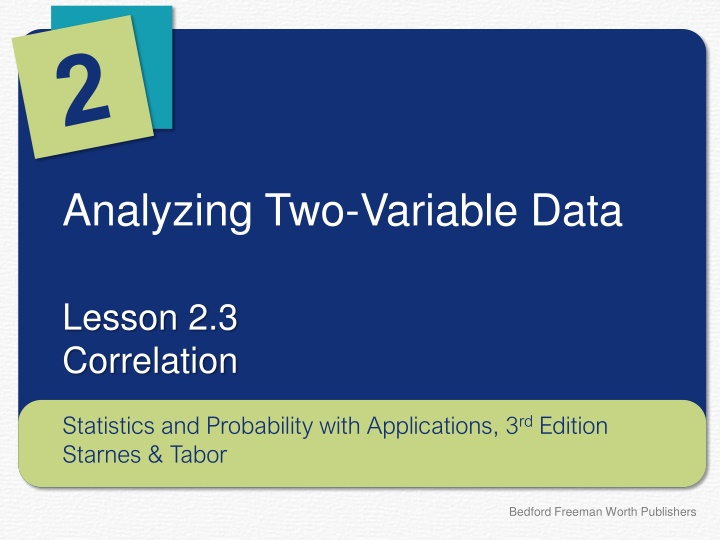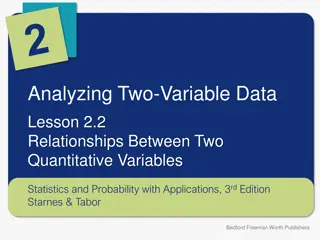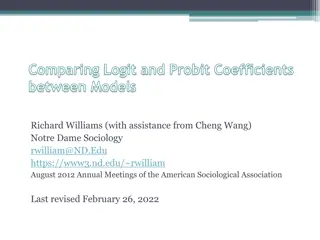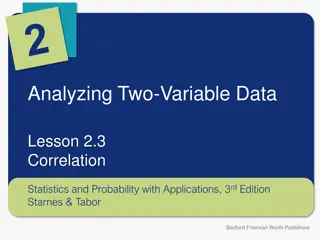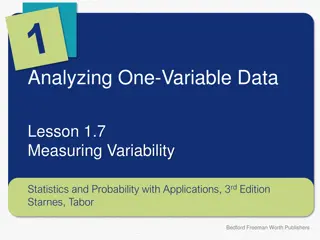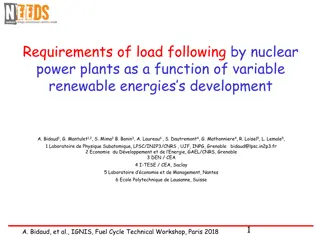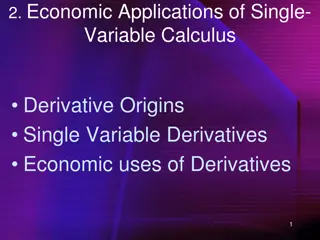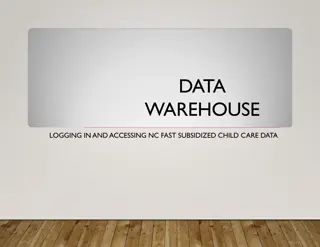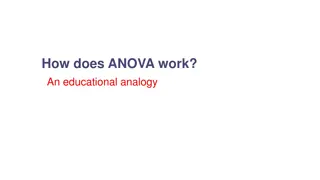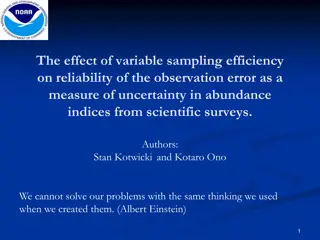Analyzing Two-Variable Data
This lesson explores correlation in two-variable data, emphasizing the strength and direction of a linear relationship using the correlation coefficient. It discusses how to interpret correlations, differentiate between correlation and causation, and highlights the limitations of correlation analysis. Through scatterplots and examples, you will learn to estimate correlations, understand their implications, and grasp the distinction between linear and nonlinear associations.
Download Presentation

Please find below an Image/Link to download the presentation.
The content on the website is provided AS IS for your information and personal use only. It may not be sold, licensed, or shared on other websites without obtaining consent from the author.If you encounter any issues during the download, it is possible that the publisher has removed the file from their server.
You are allowed to download the files provided on this website for personal or commercial use, subject to the condition that they are used lawfully. All files are the property of their respective owners.
The content on the website is provided AS IS for your information and personal use only. It may not be sold, licensed, or shared on other websites without obtaining consent from the author.
E N D
Presentation Transcript
Analyzing Two-Variable Data Lesson 2.3 Correlation Statistics and Probability with Applications, 3rdEdition Starnes & Tabor Bedford Freeman Worth Publishers
Correlation Learning Targets After this lesson, you should be able to: Estimate the correlation between two quantitative variables from a scatterplot. Interpret the correlation. Distinguish correlation from causation. Statistics and Probability with Applications, 3rdEdition 2 2
Correlation In the previous lesson, we used direction, form, and strength to describe the association between two quantitative variables. To quantify the strength of a linear relationship between two quantitative variables, we use the correlation r. Correlation r The correlation r is a measure of the strength and direction of a linear relationship between two quantitative variables. The correlation r falls between 1 and 1 ( 1 r 1). If the relationship is negative, then r < 0. If the relationship is positive, then r > 0. If r = 1 or r = 1, then there is a perfect linear relationship. In other words, all of the points will be exactly on a line. If there is very little scatter from the linear form, then r is close to 1 or 1. The more scatter from the linear form, the closer r is to 0. Statistics and Probability with Applications, 3rdEdition 3 3
Correlation Here are six scatterplots and their corresponding correlations. Statistics and Probability with Applications, 3rd Edition 4 4
Correlation Caution! A correlation close to 1 or 1 doesn t necessarily mean an association is linear. For example, the scatterplot below is clearly nonlinear, yet the correlation is r = 0.93. Correlation alonedoesn t provide any information about form. To determine the form of an association, you must look at a scatterplot. Statistics and Probability with Applications, 3rd Edition 5 5
Correlation While the correlation is a good way to measure the strength and direction of a linear relationship, it has limitations. Most importantly, correlation doesn t imply causation. In many cases, two variables might have a strong correlation, but changes in one variable are very unlikely to cause changes in the other variable. Statistics and Probability with Applications, 3rd Edition 6 6
LESSON APP 2.3 If I eat more chocolate, will I win a Nobel prize? Most people love chocolate for its great taste. But does it also make you smarter? A scatterplot like this one recently appeared in the New England Journal of Medicine. The explanatory variable is the chocolate consumption per person for a sample of countries. The response variable is the number of Nobel Prizes per 10 million residents of that country. 1. Interpret the correlation of r = 0.791. If people in the United States started eating more chocolate, can we expect more Nobel Prizes to be awarded to residents of the United States? Explain. 2. Statistics and Probability with Applications, 3rd Edition 7 7
Correlation Learning Targets After this lesson, you should be able to: Estimate the correlation between two quantitative variables from a scatterplot. Interpret the correlation. Distinguish correlation from causation. Statistics and Probability with Applications, 3rd Edition 8 8
